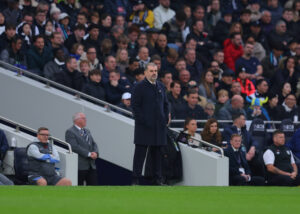Asia is a rising giant in football. The continent successfully hosted the 2002 World Cup, leading to a boom in interest for the sport. A year from this December, Asia will host its second world cup – the highly controversial Qatar 2022 tournament. When people talk about football in Asia, the Chinese Super League often pops up. It’s not hard to see why – the league made a massive splash in world football several years ago, signing top players in their prime from European powerhouses. But with the league changing due to the Chinese government scaling back their investments, there’s another league in Asia that’s quietly one of the best in the world. This is the J-League – the best football league you’re not watching.
The J-League Emerging as Asia’s Best
The 100-Year Plan
Japan is, by comparison to many of the top footballing countries in the world, a relatively new contender in football. With their professional league, the J-League, having been born in 1992, its history is very light in comparison to many European leagues. Yet, despite this, the J-League is one of the most ambitious leagues in the world, making incredible strides over the past three decades to bring Japan to the forefront of the Asian game.
And to understand the ambition of the J-League, you must understand the 100-year plan. Up until 1992, Japan had no professional football league. The Japanese were starting from the ground up here. There were amateur clubs but the support and talent was non-existent. To go about changing this, Japan created a plan that, at the end of it’s completion, would ideally see Japan having a top-four league in the world, a thriving academy system to utilize Japan’s enormous population, at least 100 fully professional clubs across several leagues in a professional pyramid, and a World Cup title by 2092.
The J-League was the first step towards Japan’s ambitious 100-year march to the summit of world football.
The Early Days – Pre 2002
The early years of the J-League saw a slight increase in interest from the Japanese public. The league was young, and Japan was a very powerful and financially dominant country. This meant that in the early days of the J-League, the new league was able to attract aging and retiring European players, similar to how the tactics of MLS.
Perhaps the most famous of these players was none other than Gary Lineker. But the J- League was a few years away from being ‘the best league you’re not watching’.
The early days of the J-League were rocky. There were years where crowd interest was stronger than others, but for the most part, the league was not the powerhouse it had hoped to be, even with older European stars signing on to drum up interest.
The Japanese footballing authorities began to draw up intense rules for how a club could join the J-League system. Their goal was to have 100 professional clubs by 2092. Rules included the need for grassroots support, Japanese ownership and financial stability.
The World Cup
The J-League would continue to be a semi-popular league until 2002 – perhaps one of the most important, if not the most important, event in the history of the Japanese game. While arguments can, and should, be made about whether the World Cup is a financially sound investment for a country, there can be no doubt that in Japan’s case, the tournament changed the country’s footballing path.
With the eyes of the world on Japan and South Korea, the world’s game became a local obsession in Japan. New stadiums that were built for the World Cup were handed over to J-League clubs. Better grounds attracted more fans, and the football fever that gripped the nation in the summer of 2002 continued long after: The J-League began to see increase in fans, and more and more cities were creating clubs that would join the J-League system. The plan was beginning to work.
The Best League in Asia
Japan began to see their footballing fortunes change. The academy system was finally producing players who could lift the league. The rise in quality didn’t go unnoticed by Europe, with many of the J-League’s top stars making the move to European clubs. Players like Shinji Kagawa, Keisuke Honda, Takumi Minamino, Takefusa Kubo and Hiroki Abe are just a few examples.
The quality on the pitch began to improve, the fans in the stadiums began to increase and the European powers began to take notice of Japanese talent. And it wasn’t just Japan’s league that was benefiting – the Samurai Blue, the Japanese national team, saw themselves become incredibly successful in Asia. Since 1992, Japan has won the Asian Cup four times, playing in five finals. Since 2002, they have never failed to qualify for a World Cup, and have been accepted as dominant team in the Asian game.
Competition
The J-League had set out a goal for itself of having at least 100 professional clubs by 2092. That goal is now looking more and more like a reality. The J-League currently overseas 55 professional football clubs across a three-league pyramid. The league is now famous in Asia for how fiercely competitive it is – since 1992, every single club that has played in the J-League has been relegated.
If that’s not enough, the league is truly unpredictable. In 2010, Kashiwa Reysol were a club playing in the Japanese second division. They won promotion and in 2011 they were champions of Japan.
Clubs go from winning the J-League to relegation battles and vice-versa at an amazing and unpredictable pace. The excitement of the J-League comes from the fact that it is truly a league where you can lose to any club, in any game, at a much higher rate than a lot of other, more established leagues.
The league has seen its popularity sky-rocket in Japan and Asia, and this has seen an expansion of what was originally a ten-club league to 20 clubs today. J-League clubs have won three Asian Champions League titles, with Urawa Red Diamonds winning a bronze medal at the 2007 FIFA Club World Cup.
The Future of the J-League
The J-League has proven to be an ambitious, competitive and unpredictable league. Its creation has seen Japan rise from an unknown in the footballing world to the main dominant force in Asia. Japanese stars are common in Europe, with many more on the way. The league is now ranked as the 24th best in the world, ahead of more established leagues such as the Scottish Premiership.
It continues to expand, too, with their goal of 100 professional clubs now looking more and more likely. They still have another 70 years to get the J-League into the top four leagues in the world. With what they’ve accomplished in just 30, you can be sure that the future of Japanese football is not one you’d want to miss.
Main Photo






